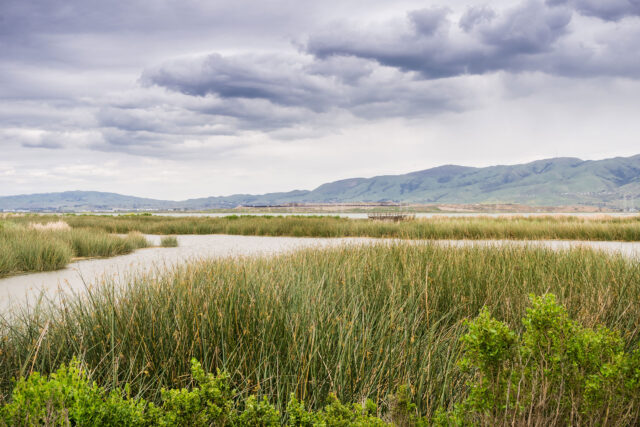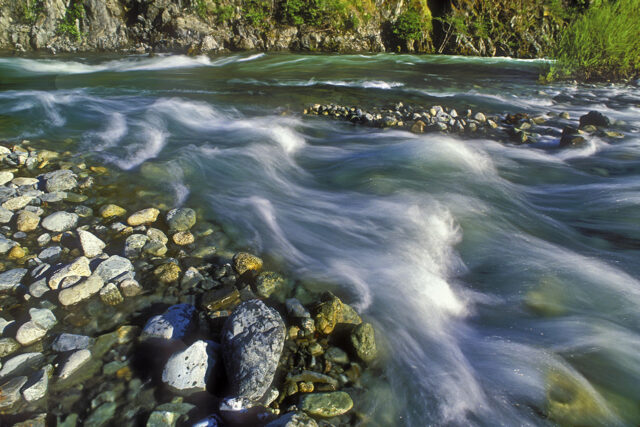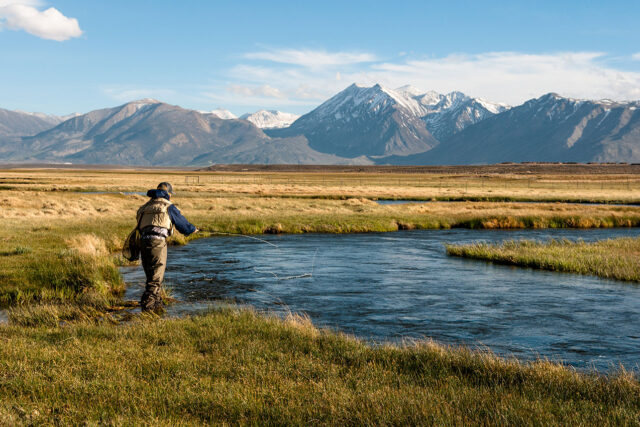Carson Jeffres is a senior researcher and lab director at UC Davis’s Center for Watershed Sciences. For over 20 years, he’s studied how native fish utilize and benefit from restored habitats in both Brazil and California. His current research focuses on the recovery of salmon populations in California. We asked him to update us about the effort to save this iconic, embattled fish.
Could you summarize what people should know about fish and floodplains, and what this means for California salmon?
When river water leaves the channel and spreads out across the floodplain, it slows down, clears up, and becomes productive, making lots of great insect food for fish. Many fish evolved to take advantage of this, whether they’re spawning on floodplains or using that food during their migration upstream or downstream. But dams and levees prevent water from getting out onto floodplains, disconnecting fish from this important resource.
Although salmon are born in the gravel in rivers, when they migrate out to the ocean they move onto floodplains to feed. If they miss the floodplain and stay in the river, they can get to the ocean too early—before upwelling creates food to eat—and too skinny, making them less likely to survive. Floodplains provide a buffer and diversify the timing of ocean entry and life history strategies. The small fry on the floodplain can grow at phenomenal rates in a very short period of time, so that when they hit the ocean, they’re big and fat, and can compete for food and escape predators. This is what they’ve done for millennia. We have managed to disconnect them from this food source within a little more than a century.
How do we know if a salmon—when it returns to spawn—has even used a floodplain as a juvenile? And how do we know if floodplain restoration is doing any good?
It’s hard to monitor these fish throughout their lifetime. They’re too small to tag on the floodplain, and they’re gone for three years before they come back into the river again. So we’re working on creating different tools to track them. It turns out the eye lens of a fish functions as both a diet journal and a habitat journal. The eye of the fish grows like an onion, so as they grow older, they put on new layers. Once they come back from the ocean to spawn and die, we can take the eye lenses out of the dead fish, peel them, and analyze the isotopes to understand the landscapes they were using during their juvenile life-stage. Floodplains have a very unique isotopic signature. We can tell if fish have been on a floodplain or stayed in a river on their way to the ocean.
In California we’re spending a lot of effort restoring habitat for salmon. We know this benefits juveniles, but what really counts are the fish that come back to spawn. That’s what the population is measured by. If we find that fish coming back spent time in floodplain habitats while they were juveniles, we can begin to see whether the restoration work we’re doing is making a difference. We have a freezer of eyeballs we’re cueing up to start processing. This takes a lot of time with a lab full of people peeling eyeballs, but if we’re spending tens to hundreds of millions of dollars on restoration, it’s a small cost to measure that success. And our early results are telling us that fish that spend time on the floodplain as juveniles appear more likely to make it back to spawn. But we have a lot of work ahead to confirm this.
Finally, there is a lot of bad news out there for native salmon. Drought, vitamin B deficiencies, too many predators…is there reason for hope here? What will it take to keep the salmon going?
The fact that salmon are still here is kind of a miracle to me. We have done our best to get rid of them. In our quest for electricity, flood control, and water supply, salmon were an afterthought. Despite that, they have made it this long. Now, thanks to regulations and investments in habitat, they have a seat at the table. There are reasons to hope. These are long-lived fish, so it can take many years to see the benefits of restoration efforts. These fish are resilient—they cope with bad conditions by having some in the river while some are in the ocean. If we do our part on the rivers and floodplains, we may see success. The present might not look like the past when salmon were abundant, but there is still a lot of opportunity to sustain salmon in California. We shouldn’t give up on these fish.






